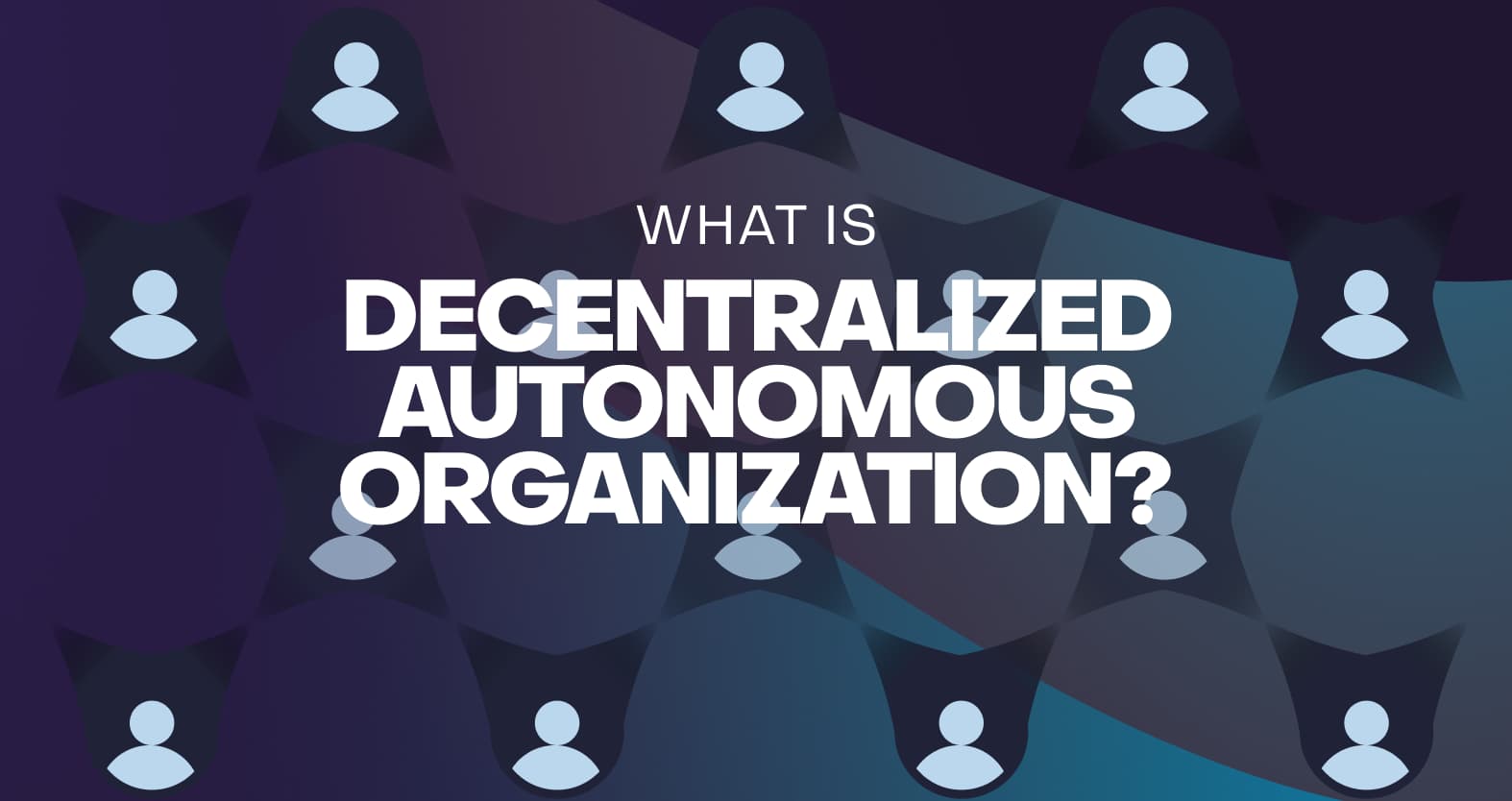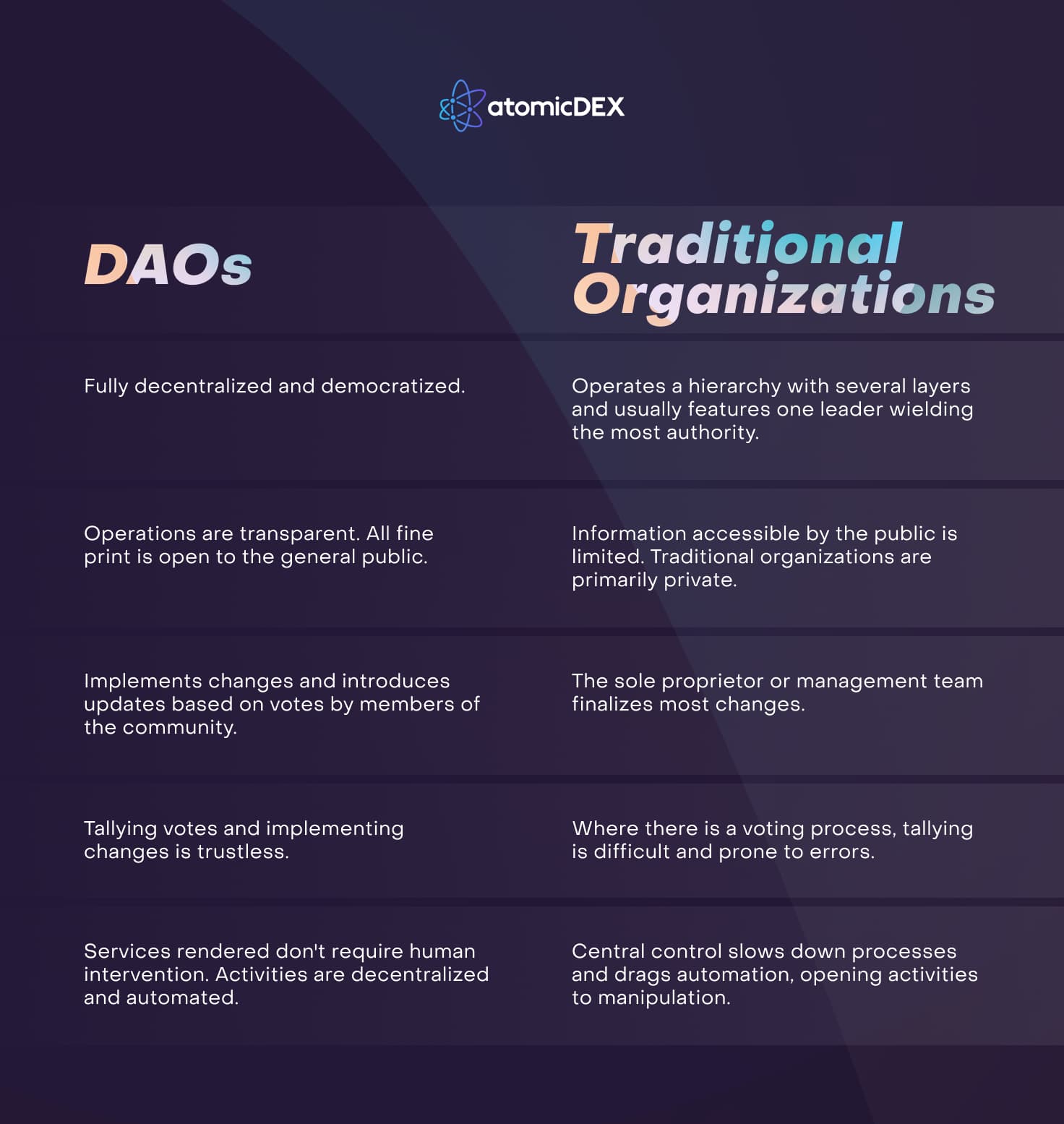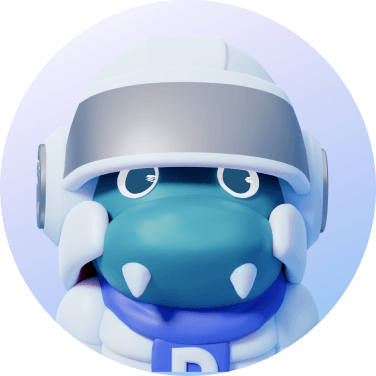
Table of contents
The decentralized nature of the cryptocurrency and blockchain technology sector is a significant selling point. Many people see projects in this sector as the best way to avoid problems that continuously plague the more centralized traditional system.
For the most part, blockchain allows these projects and their users to function and transact without an intermediary or the usual bureaucracy.
Since maximum decentralization involves input from as many community members as possible, it's vital to create a structure that considers member opinions and only implements changes agreed by the majority. Decentralized autonomous organizations cater to crypto and blockchain projects with this need.
Key Takeaways
- Decentralized autonomous organizations are a form of governance run by a collective rather than a central authority.
- All DAOs require smart contracts.
- Members can vote to support or suspend proposed changes to projects.
- Membership may be token-based or share-based
What Is a DAO?
A DAO is an entity that functions as a governing body for cryptocurrency and blockchain projects. Decentralized autonomous organizations ensure that all activities, decisions, and changes implemented by these projects reflect the desires and preferences of community members. These organizations have no central leadership or physical locations and are all wholly owned and collectively managed by the community.
Decentralized autonomous organizations also help to solve the principal-agent problem. Many systems operate with a structure that features an agent and a principal. The principal-agent dilemma occurs when there is a conflict of interest between the principal who owns an asset and the agent appointed to control the asset. Since a DAO’s basic structure promotes inclusivity and incentivizes all stakeholders, there is little to no conflict of interest.
DAO History
The first DAO concept originated from Slock.it, a team that built a smart contract to raise funds. The crowdfunding initiative gathered funding for several startups and projects focused on Web3. In addition to raising funds, Slock.it programmed ownership and voting rights into the smart contract. Participants received tokens representing their initial investment plus current value and were allowed ownership of a percentage of the fund.
In 2016, a group of Ethereum developers created The Decentralized Autonomous Organization to stamp out human error and manipulation by automating their entire process and allocating voting rights to members. Although The DAO suffered a $50 million hack and is now defunct, it build the foundation for a technology that is now more popular than ever.
DAOs vs. Traditional Organizations
DAOs and traditional organizations have one major similarity. Both types of entities usually begin with a founding member or team. A traditional organization might begin with an experienced entrepreneur, while DAOs are usually launched by a group of people looking to improve a project and its community. However, everything else about these entities is essentially different. Here are the primary differences:

How Does a DAO Work?
DAOs have different modes of operation that vary between blockchains. Specifics on voting, changes, and implementation methods may differ between networks. However, before launch, all DAOs go through several phases, including the following:
- Smart Contract Setup: DAOs require smart contracts to function. These smart contracts handle the organization’s processes, including governance, incentives, and operations. This process is crucial because developers must block all loopholes that could cause problems in the future.
- Funding: DAOs usually gather funds before deployment. The smart contracts that power these organizations include a mechanism that governs the minting and issuance of tokens that power the platform. Members of the community can use these tokens to vote or receive them as incentives.
- Deployment: After the funding phase, the DAO may launch following a consensus vote. Upon deployment, people who have purchased tokens now have some right to the DAO and may be able to contribute to making decisions. DAOs that properly outline operating policies run independently without any influence from creators.
DAO Membership
The following are two major membership models DAOs employ:
- Token-Based Membership: Most DAOs issue governance tokens that are available on crypto exchange platforms. The process is usually permissionless and grants purchasers voting rights.
- Share-Based Membership: Here, the prospective member must apply to the DAO and offer some value. DAOs that employ this method allow voting rights according to share volume.
Advantages of DAOs
- Transparency: Activities carried out by DAOs are open to scrutiny by members and the general public. The decentralized structure makes it difficult for any party to keep activities under wraps.
- Fewer Errors: DAOs operate without the human factor. Since most processes are automated, the possibility of errors caused by human negligence reduces considerably.
- Inclusivity: With DAOs, all community members have a voice and can play their part by participating in community decisions and voting according to their tokens or shares.
Disadvantages of DAOs
- Decentralization Doesn't Assure Security: DAOs don't entirely solve the human error problem. Creators designing smart contracts can make seemingly minor errors that hackers can exploit. For instance, the Ethereum DAO project lost fortunes which eventually caused the organization to shut down after hackers exploited a vulnerability in the platform’s code.
- Extended Timelines: The average timeline for implementing DAO projects sometimes extends. In addition, automated systems can't function in unusual circumstances and may be ineffective without human input.
- Majority Opinion: Although implementing the majority opinion ensures that decisions take most people into account, others have to follow this opinion regardless of their preferences.
Examples of DAOs
Many crypto projects have implemented their own DAOs as a means of creating a decentralized governance system. Some governance tokens are actually coins — meaning they have their own blockchains. Others are ERC-20 tokens that use the Ethereum blockchain. Examples include the following:
- Uniswap (UNI)
- Dash (DASH)
- Maker (MKR)
- Compound (COMP)
Decentralized autonomous organizations provide trusted alternatives to traditional organizational methods. DAOs are more inclusive, transparent, and significantly more secure than standard, centralized organizations.
Anyone can begin holding tokens required for DAO participation by downloading the AtomicDEX wallet.




